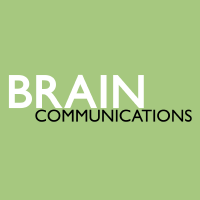
@BrainComms
@braincomms
Brain Communications is the #OA sister journal to @Brain1878. We aim to publish robust translational neuroscience studies.
ID: 1105487831135383552
https://academic.oup.com/braincomms 12-03-2019 15:16:52
2,2K Tweet
5,5K Followers
946 Following







































